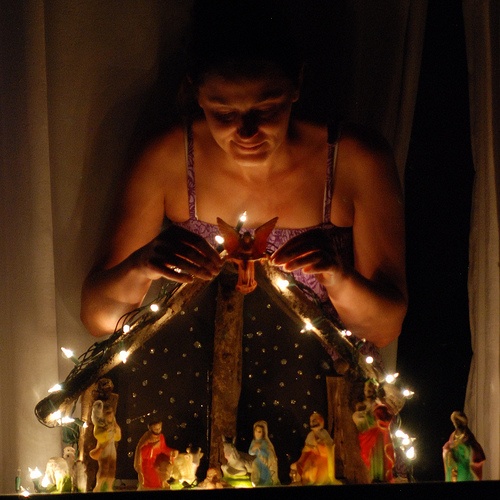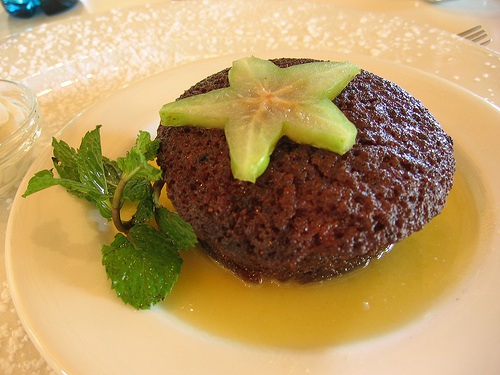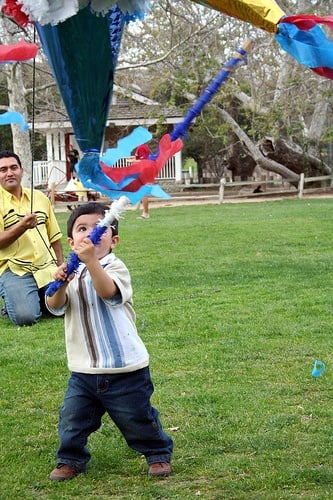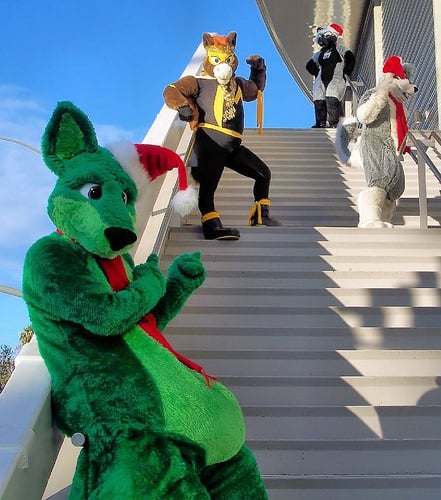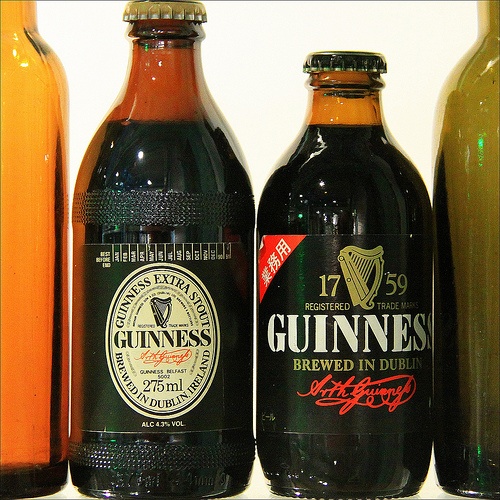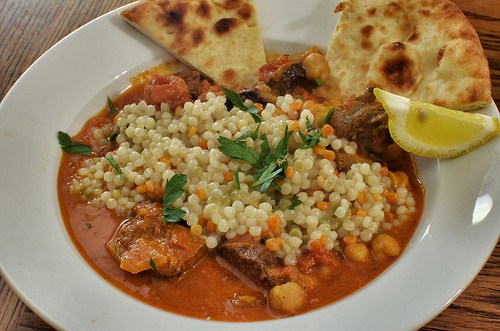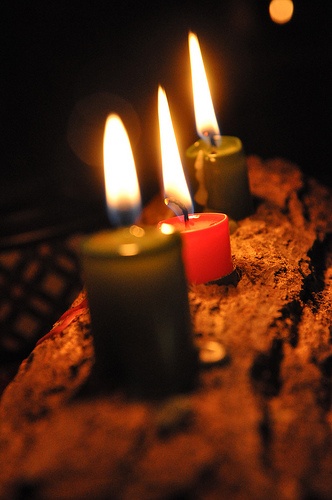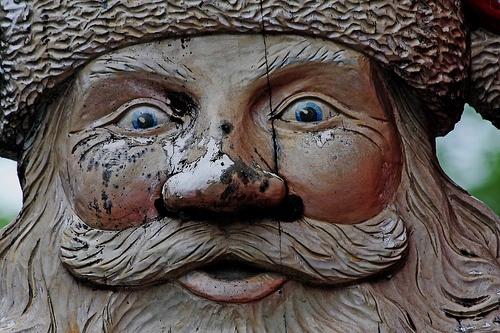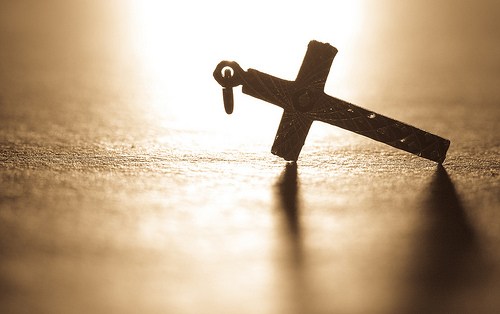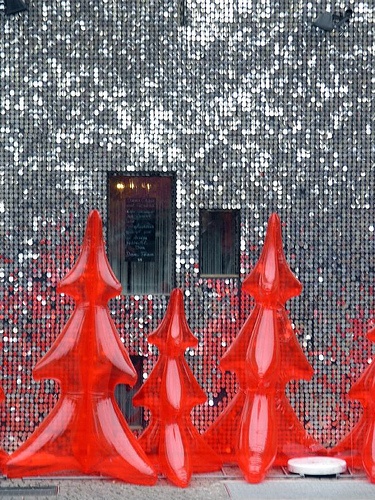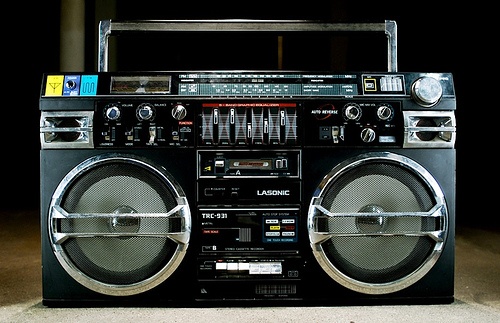1. Costa Rica
Photo via Flickr An important symbol of Christmas in Costa Rica is the model of the nativity scene, called the Pasito or Portal. It’s the main focus of the Christmas decorations, which also include tropical flowers and often fruit. The whole family participates in decorating the scene, which often takes a long time to make. Wreaths of cypress branches, decorated with ribbons and red coffee berries round out the decor. The country’s population is largely Roman Catholic, so Christmas Eve is spent attending Midnight Mass, which is called the Misa de Gallo (Mass of the Rooster), followed by a Christmas meal of pork and chicken tamales wrapped in plantain leaves. Gifts are brought by Nino Dios (meaning Child God, or Jesus) or Colacho, which is what Costa Ricans call St. Nicholas.
2. Germany
Photo via Flickr A major focus of Germany’s Christmas celebrations is Advent. They use various types of Advent calendars, including ones in the shape of a wreath fashioned out of fir branches. From these circular calendars hang 24 decorated bags or boxes, each of which contains a small gift. Another version is a fir wreath with four candles on it. A candle is lit each week during the Advent celebration. Residents of Germany differ on who they think brings the gifts on Christmas Eve. Some say it’s Santa Claus or Father Christmas, known as Weihnachtsmann. Others say it’s Christkind, The Christ Child. Some also believe a character called Knecht Ruprecht, or Krampus, accompanies St. Nicholas. Rather than bringing gifts, this horned monster comes to punish the children who were bad.
3. South Africa
Photo via Flickr Since it’s in the Southern Hemisphere, residents of South Africa celebrate Christmas in the summer. Schools close, so many people spend the holiday camping or swimming. Caroling on Christmas Eve is quite popular in the cities. There are services where carols are sung by candlelight. South African cuisine also plays a major role in the holidays. A Christmas meal of turkey, duck, roast beef, or suckling pig is served with vegetables, yellow rice and raisins alongside. The meal is followed with a traditional dessert called Malva, or Lekker, Pudding.
4. Mexico
Photo via Flickr In Mexico, the Christmas celebration lasts from December 12th through January 6th. Beginning on December 16th, Mexican children perform a series of nine Posadas. These processions represent Joseph and Mary’s search for a place to stay. They walk with candles to various houses where they sing a song and are then told there is no room. At the last house of the final Posada, on Christmas Eve, the children are told there is room and welcomed in for a a celebration that includes prayers of thanksgiving and a party with food, fireworks, and often a pinata.
5. Australia
Photo via Flickr When Santa reaches Australia he trades his reindeer in for kangaroos, known as Six White Boomers (a popular local Christmas song). He also sheds his furry suit for some cooler clothes to beat the heat in the Outback. Beach barbecues are a popular way to celebrate with family. In addition to the traditional fare, many dine on seafood such as prawns or lobster. The celebratory meal is usually eaten at lunch time.
6. Canada
Photo via Flickr Many Canadians argue that Santa Claus himself hailed from Canada, although residents of Finland make the same claim. Either way, he’s a major part of the country’s Christmas celebration. An annual parade in Toronto is one of the biggest and oldest in the world and involves over 2,000 participants. Another favorite Christmas pastime in Canada are cookie baking parties. Families bring their favorite recipes, bake a batch, and then swap them with other attendees so that everyone leaves with an assortment of cookies to enjoy over the holidays.
7. Ireland
Photo via Flickr Forget milk and cookies. In Ireland it’s customary to leave mince pies and a bottle of Guinness out for Santa Claus. Another Christmas Even tradition involves leaving a tall, thick candle burning in the largest window. The candle is allowed to burn all night as a symbol to welcome Mary and Joseph.
8. Egypt
Photo via Flickr Christians in Egypt participate in a Holy Nativity Fast for the 43 days before Christmas. They eat what is essentially a vegan diet, which contains no foods that come from animals (including milk and eggs). On Christmas Eve, they attend a church service that begins around 10:30 and can last until as late as 4:00 a.m. Following the service, everyone goes home to the big Christmas meal, which contains meat, butter, and all of the other yummy things they couldn’t eat during the Advent fast. A popular dish is Fata, a soup that contains rice, bread, garlic, and boiled lamb.
9. France
Photo via Flickr In French homes, yule logs made of cherry wood are often burned. They’re sprinkled with red wine, which creates a nice aroma. The logs, along with candles, are left burning through the night. They’re accompanied by food and drinks that are left out in case Mary and the Jesus visit during the night. Christmas decorations often include a nativity crib that’s adorned with clay figures. In addition to the typical nativity characters, French scenes sometimes include a butcher, a baker, a priest, and a policeman. Photo via Flickr
10. Finland
Photo via Flickr Finland is long believed to be the home of Santa Claus or Father Christmas. He’s presumed to live in the Korvatunturi, or Lapland, north of the Arctic Circle. An address there receives letters to Santa Claus from all over the world. There’s also a large theme park called “Christmas Land” in the area. Another important Christmas figure is Joulupukki, which translates to “Christmas Goat.” This character was a scary goat who asked people for presents, without every giving any in return. Eventually, though he began giving gifts, a duty that was later taken on by Santa.
11. Greece
Photo via Flickr Caroling is also popular in Greece, where children walk the streets singing and playing drums and triangles. According to custom, they often carry model boats that are painted gold and decorated with nuts. If they perform well, they are rewarded with sweets, nuts, or even money. Rather than a Christmas tree, many Greek homes display a shallow wooden bowl with a piece of wire suspended over it. From the wire hangs a cross wrapped in a sprig of basil. Each day the cross is dipped into holy water and sprinkled throughout the house to ward off evil spirits known as Killantzaroi, which appear during the 12 days from Christmas to Epiphany on January 6th.
12. Brazil
Photo via Flickr Children in Brazil await a visit from Papai Noel or Bom Velhinho, which means Good Old Man. They leave him a sock near the window, which he exchanges for a gift. Another popular gift-giving tradition in Brazil involves those from an amigo secreto, a secret friend. These admirers give small gifts all through the month of December using a false name, only to reveal their true identify on Christmas Day.
13. China
Photo via Flickr Since only about 1% of China’s population is Christian, most people know very little about Christmas. This is despite the fact that the majority of the world’s plastic Christmas trees and decorations are manufactured there. Although most don’t understand its meaning, Christmas is still widely celebrated in China, particularly in the major cities. One popular tradition is the giving of apples, likely because Christmas Eve in Chinese is Ping An Ye which is similar to the Chinese word for apple, Ping Guo.
14. Zimbabwe
Photo via Flickr Christmas day in Zimbabwe usually begins with a church service. After its conclusion, everyone goes from house to house to visit with all of their friends and family where they eat and exchange gifts. This celebration often lasts the rest of the day. Music is also a big part of the celebration. Many people place speakers outside the front of their homes and play their favorite tunes at loud volumes. This could include holiday songs, contemporary music, or even traditional African tunes.
15. Japan
Photo via Flickr Since there are few Christians in Japan, Christmas is seen more as a time for spreading cheer than it is as a religious celebration. And it’s Christmas Eve that tends to be the more celebrated day. With a focus on couples spending time together, it actually bears a closer resemblance to Valentine’s day. Young couples exchange gifts and enjoy activities like strolling around looking at Christmas lights and eating a romantic meal. Featured photo credit: Compfight via flickr.com
